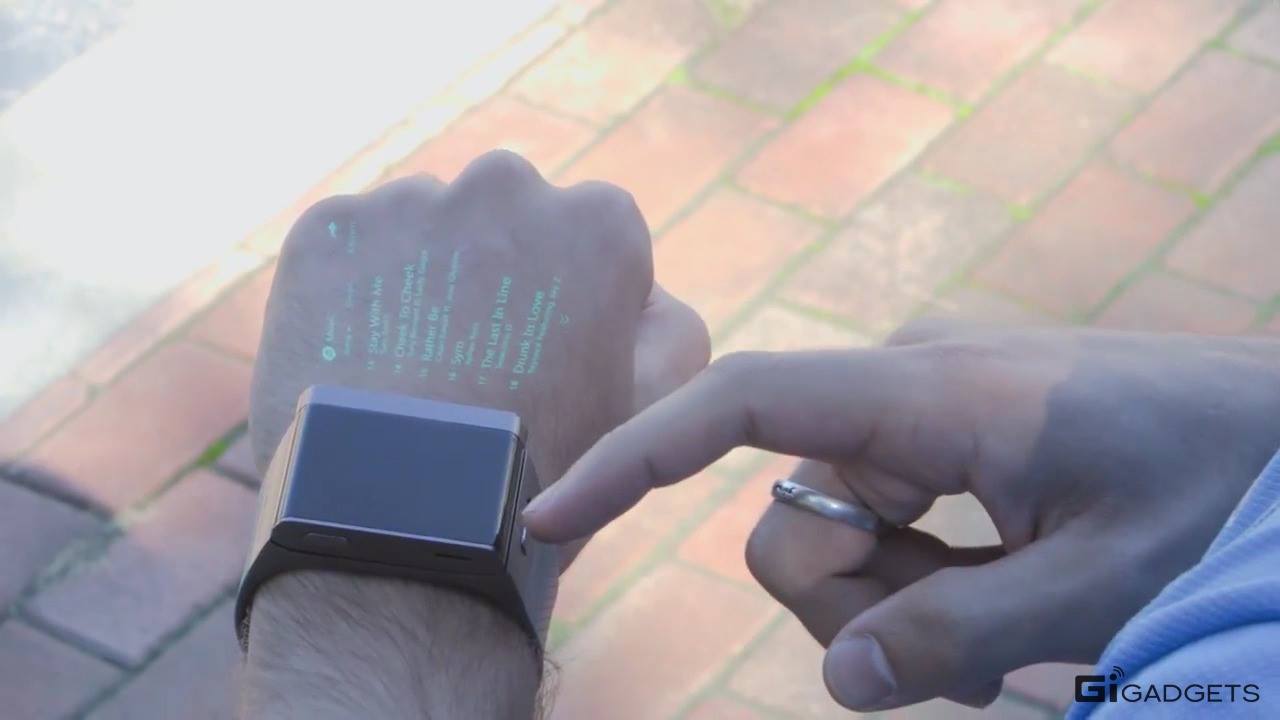ASU Smartwatch that is not only wearable gadget, but a projection puts the “screen” on back of the hand, walls, or desktop etc.”

ASU Smartwatch that is not only wearable gadget, but a projection puts the “screen” on back of the hand, walls, or desktop etc.”
Understanding time is one of the big open questions of physics, and it has puzzled philosophers throughout history. What is time? Why does it appear to have a direction? The concept is defined as the “arrow of time,” which is used to indicate that time is asymmetric – even though most laws of the universe are perfectly symmetric.
A potential explanation for this has now been put forward. Physicist Sean Carroll from CalTech and cosmologist Alan Guth from MIT created a simulation that shows that arrows of time can arise naturally from a perfectly symmetric system of equations.
The arrow of time comes from observing that time does indeed seem to pass for us and that the direction of time is consistent with the increase in entropy in the universe. Entropy is the measure of the disorder of the world; an intact egg has less entropy than a broken one, and if we see a broken egg, we know that it used to be unbroken. Our experience tells us that broken eggs don’t jump back together, that ice cubes melt, and that tidying up a room requires a lot more energy than making it messy.
I must admit some of the information in this article is making me scratch my head a lttle. However, I do believe that many of us who wish to remain relevant in the future (especially in industry and government) will find ourselves requiring a Brain Mind Interface (BMI) of some sort whether it’s an implant or nanobot; folks will find that they have to have one in order to work or function in society.
Transhumanists claim complete freedom to modify their bodies, but that absolutist stance could endanger future generations.
Dreaming of wormholes: Kaku said “The only feasible way to break the light barriers is through general relativity and warping of space-time”. We call this warping as wormholes, theoretically, these allow something to break the cosmic speed limit by travelling huge distance in a short time. These wormholes have some exotic matter, holding them open. This exotic matter has been made in laboratories but in a small quantity. In 1988, Kip Thorne proposed a theory of Stable Wormholes to find out the possibility of a wormhole in the presence of that exotic matter (like the one in Interstellar Movie). Thorne says “After 30 years, the answer is still unknown and we are still away from the final answer.”

https://www.youtube.com/watch?v=VenG8TF90yA&feature=youtu.be
Experience the whole new future created by OLED and see how OLED will bring significant change to our life.
For more information visit▶
LG OLED TV UK URL: http://www.lg.com/uk/lgoled/
Google/ Alphabet certainly has been diversified; and doesn’t look like they’re going to slow down any time soon.
Unlike most chief executives, Larry Page has invested far beyond Google’s company’s core business, and in many ways has made it a reflection of his personal fascinations.
VR Movie Studios
Now, that’s a story! Samsung VR Movie Studios; nice ring to it. Instead of “hello Hollywood” we’re now hearing “Hello New York”.
The company behind the Gear VR virtual-reality headset partners with the Sundance film festival to foster new immersive experiences.
Kudos to Manpower’s CEO Jonas Prising — with the possibility on the horizon of a world wide loss of 5 million jobs; we need to make sure we a structure in place to absorb that hit with needs to include education & retraining and a financial support structure to help those laid off and their immediate family members (namely children). And, the earlier we can train folks; the less costly it will be for governments and countries in the long run.

ManpowerJonas Prising, CEO and Executive Chairman of Manpower, spoke to Business Insider in Davos for the WEF meeting.
Over 2,500 of the world’s most powerful people have talked about the risks and opportunities surrounding “The Fourth Industrial Revolution” this week at the World Economic Forum in Davos, Switzerland.
Interesting; no more rotten fruit. Researchers may actually found a new way to preserve perishable foods. Can you imagine the cost savings to consumers, plus being able to supply more people with fresh fruits and vegetables. World Bank and Health Organizations should be interested in this as well.
It does make me wonder how the research on life extension, etc. can learn from the findings of this experiment.
Researchers have managed to “pluck” a single photon – one particle of light – out of a pulse of light.”
Can you say “amazing” — brain tumor removed without surgery.
The Neurosurgery wing of the Local Apollo hospital here successfully conducted a rare, modern at the same time sensitive method of removal of a brain tumor tissue for diagnosis sending a small needle deep in to the brain without opening the skull and anesthesia. This sophisticated and critical process known as ‘Stereotactic Biopsy was conducted on a 50 year old woman Thalari Chinnammayi, without any complications and with hardly two days of hospitalization. Claiming such Biopsy application as the first of its kind in Coastal Andhra region, Dr M V Kiran Kumar senior consultant Neuro surgeon of Apollo hospital, said it would involve less expenditure and almost risk free and not warrant a repeated biopsy. Presenting the patient before the press persons here today, he said, she was suffering from chronic headache for the past one month and during clinical examination it was found she was having small tumor in the brain that too in a very deep lesion.‘ The tumor in size of 1.5x 2cms was located in the left side of the brain at a place called as Caudate Nucleus. A small piece of brain tissue was removed by performing stereotactic biopsy and during examination it was diagnosed as grade-3 Anaplastic Astrocytoma (cancerous growth). She was referred to Oncologist for treatment either by chemo therapy or Radiation he added. Dr C Suryaprakasarao Medical director of the hospital said that the Neurology department was strengthened by acquiring modern sophisticated equipment besides appointing Dr Kamaraju as a Neuro physician. I. V.V Ramana hospital chief administrator said that they were going to introduce the ‘Deep brain stimulation therapy utilising the expertise of Dr Kiran Kumar. UNI XR/DP KVV AK1935.
– (UNI) — C-1–1-DL0415-554045.Xml.
